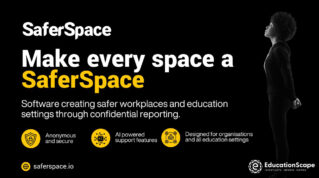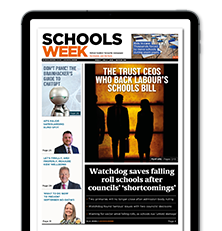This week’s government announcement of a forthcoming SEND white paper has ensured SEND reform rightly remains at the forefront of education policy. Rightly so, but any change must be informed by innovation already taking place across the sector.
The white paper announcement follows the launch of a SEND inquiry by the education select committee, as well as an Ofsted inspection shake-up that has the introduction of a separate grade for inclusion as one of its key proposals.
The former will no doubt hear from a range of voices, while the latter has attracted a strong sector response, with views as colourful and wide-ranging as the proposed new kaleidoscopic grading system.
It’s clear to me and I’m sure most Schools Week readers that inclusion must be at the heart of every mainstream school and trust rather than the separate function it often is. The question is: how?
At Learning in Harmony Trust, we’ve made concerted efforts to become as inclusive as possible for children and young people with SEND in recent years. I’m sharing our approach at the SEND Update Conference on 12 March.
I’ll be joined by Penny Swain and Rik Chilvers of Supporting Education Group, who have worked on a comprehensive set of recommendations now with the committee’s inquiry.
Their report contains powerful proposals to support the changes we so desperately need. These include extending the SEND element in the NPQ leadership and specialist qualifications, additional specialist teacher training routes and a new national framework to help schools identify and address pupils’ SEMH needs before they escalate.
I hope the inquiry helps unlock the systemic changes we need, but in the meantime trusts can and will innovate. For example, our roadmap to SEND inclusion touches all parts of our work: vision and purpose, research and evaluation, training and recruitment, and sharing learning beyond the classroom.
We have integrated special needs classes in our mainstream schools
Following this roadmap, we’ve managed to integrate special needs classes in our mainstream schools. This has been made possible through close collaboration between our four special schools and 10 mainstream primaries.
Staff from one of our outstanding special schools shared their expertise with their mainstream colleagues, which led to our schools establishing their own internal, informal special needs classes.
These classes are almost like special schools within a school. At one primary, for example, around 80 children are in an informal specialist hub. It means we now have a lot of very inclusive schools which are proving transformational for our young people.
There are broader challenges that trusts can’t address alone, of course. How to find more leaders with a SEND inclusive mindset is a key one. There aren’t enough trust leaders coming up through the SEND route, even though the range of leadership skills SENCOs need are, I believe, equal to those of a good headteacher.
They tend instead to rise to assistant or deputy roles with pastoral responsibilities, which can sometimes be a career cul-de-sac. Changes to nationally available training programmes will have an impact, along with increasing awareness of the talent that exists in SEND.
There are other, perhaps deeper structural challenges too, not least funding. There are currently no financial incentives for schools to be more inclusive. The way young people with EHCP are funded is not advantageous to those schools that have the capacity and expertise to move forward, causing more financial issues than it solves.
The innovative approach of our local authority, Newham, could offer some guidance. They transfer a proportion of their schools’ block money to the high needs block and use some of that to pay additional amounts to those schools with the greatest number of EHCPs, matching funds much more accurately to need.
For me, the most important element for trusts wanting to embrace SEND inclusivity is for leaders to make it a core mission. If they genuinely understand what inclusivity means, and that it is a responsibility for every SLT member and not just the SENCO, then the first steps towards real, positive change can begin.












Your thoughts